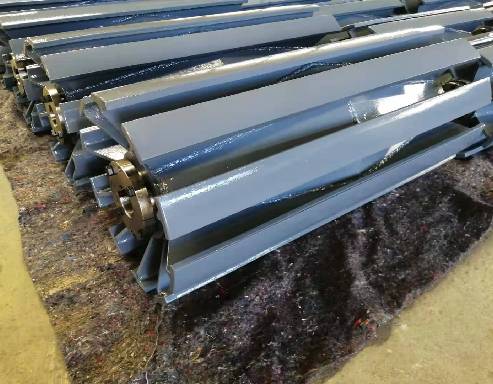 Afrikaans
Afrikaans  Albanian
Albanian  Amharic
Amharic  Arabic
Arabic  Armenian
Armenian  Azerbaijani
Azerbaijani  Basque
Basque  Belarusian
Belarusian  Bengali
Bengali  Bosnian
Bosnian  Bulgarian
Bulgarian  Catalan
Catalan  Cebuano
Cebuano  Corsican
Corsican  Croatian
Croatian  Czech
Czech  Danish
Danish  Dutch
Dutch  English
English  Esperanto
Esperanto  Estonian
Estonian  Finnish
Finnish  French
French  Frisian
Frisian  Galician
Galician  Georgian
Georgian  German
German  Greek
Greek  Gujarati
Gujarati  Haitian Creole
Haitian Creole  hausa
hausa  hawaiian
hawaiian  Hebrew
Hebrew  Hindi
Hindi  Miao
Miao  Hungarian
Hungarian  Icelandic
Icelandic  igbo
igbo  Indonesian
Indonesian  irish
irish  Italian
Italian  Japanese
Japanese  Javanese
Javanese  Kannada
Kannada  kazakh
kazakh  Khmer
Khmer  Rwandese
Rwandese  Korean
Korean  Kurdish
Kurdish  Kyrgyz
Kyrgyz  Lao
Lao  Latin
Latin  Latvian
Latvian  Lithuanian
Lithuanian  Luxembourgish
Luxembourgish  Macedonian
Macedonian  Malgashi
Malgashi  Malay
Malay  Malayalam
Malayalam  Maltese
Maltese  Maori
Maori  Marathi
Marathi  Mongolian
Mongolian  Myanmar
Myanmar  Nepali
Nepali  Norwegian
Norwegian  Norwegian
Norwegian  Occitan
Occitan  Pashto
Pashto  Persian
Persian  Polish
Polish  Portuguese
Portuguese  Punjabi
Punjabi  Romanian
Romanian  Russian
Russian  Samoan
Samoan  Scottish Gaelic
Scottish Gaelic  Serbian
Serbian  Sesotho
Sesotho  Shona
Shona  Sindhi
Sindhi  Sinhala
Sinhala  Slovak
Slovak  Slovenian
Slovenian  Somali
Somali  Spanish
Spanish  Sundanese
Sundanese  Swahili
Swahili  Swedish
Swedish  Tagalog
Tagalog  Tajik
Tajik  Tamil
Tamil  Tatar
Tatar  Telugu
Telugu  Thai
Thai  Turkish
Turkish  Turkmen
Turkmen  Ukrainian
Ukrainian  Urdu
Urdu  Uighur
Uighur  Uzbek
Uzbek  Vietnamese
Vietnamese  Welsh
Welsh  Bantu
Bantu  Yiddish
Yiddish  Yoruba
Yoruba  Zulu
Zulu conveyor belt pulley types
Types of Conveyor Belt Pulleys
Conveyor belt systems are an integral part of industrial operations, allowing for the efficient transport of materials from one location to another. At the heart of these systems are pulleys, which play a crucial role in the functionality and efficiency of conveyor belts. Understanding the different types of conveyor belt pulleys is essential for selecting the right components for your system. In this article, we will explore the various types of conveyor belt pulleys, their functions, and applications.
1. Drive Pulleys
Drive pulleys, also known as head pulleys, are typically positioned at the discharge end of the conveyor system. They are powered by a motor and are responsible for moving the belt and transferring the material on it. Drive pulleys can be designed as lagging pulleys, where a layer of rubber or another material is applied to the surface to increase friction and prevent slippage. This makes the drive pulleys particularly effective for heavy-duty applications.
2. Idler Pulleys
Idler pulleys play a supportive role in the conveyor system, as they are primarily used to guide and support the conveyor belt. Positioned throughout the length of the conveyor, idler pulleys help maintain belt alignment and tension, ensuring smooth operation. They can be designed in various shapes – such as flat, trough, or rubber – depending on the application needs. Idlers are essential for reducing wear and tear on the conveyor belt, thus extending its lifespan.
3. Tail Pulleys
Tail pulleys are located at the opposite end of the drive pulleys and serve several important functions in a conveyor system. They are primarily used to support the returning section of the conveyor belt. Tail pulleys help maintain the belt's tension and alignment, ensuring that it runs smoothly back to the drive pulley. These pulleys may either be driven or non-driven, depending on the design of the conveyor system. Non-driven tail pulleys are common and help in redirecting the return belt without any power supply.
conveyor belt pulley types

4. Snub Pulleys
Snub pulleys are used to increase the contact angle between the conveyor belt and the drive pulley. By doing so, they enhance the friction between the belt and the drive pulley, which improves the belt's ability to transport material. Snub pulleys are typically positioned between the drive pulley and the idler pulleys to create a mechanical advantage, especially in heavy-duty applications where additional traction is necessary.
5. Take-Up Pulleys
Take-up pulleys are essential components designed to adjust the tension of the conveyor belt. Proper tension is crucial for the efficient operation of a conveyor belt system, as it prevents slippage and reduces the risk of damage. Take-up pulleys can be either manual or automatic, allowing for easy adjustments over time as the belt stretches or wears down. These pulleys help maintain the optimal operating conditions for conveyor systems by allowing quick tension adjustments.
6. Wing Pulleys
Wing pulleys are a specialized type of tail pulley designed to help clean the conveyor belt as it passes over. They feature a unique shape with wings that helps to dislodge material built up on the surface of the belt. This design reduces the likelihood of material buildup, which can lead to excessive wear and potential system failure. Wing pulleys are particularly effective in conveyor systems that handle sticky or fine materials.
Conclusion
Understanding the different types of conveyor belt pulleys and their applications is essential for anyone involved in the design, maintenance, or operation of conveyor systems. Each type of pulley serves a specific purpose, contributing to the overall efficiency and effectiveness of material handling processes. By choosing the right pulleys for your conveyor system, you can significantly enhance productivity, minimize downtime, and extend the service life of your conveyor equipment. Whether it’s drive pulleys for movement, idler and tail pulleys for support and tension, or specialized pulleys like snub and wing pulleys for enhanced performance, selecting the appropriate technology can lead to significant operational advantages.
-
Revolutionizing Conveyor Reliability with Advanced Rubber Lagging PulleysNewsJul.22,2025
-
Powering Precision and Durability with Expert Manufacturers of Conveyor ComponentsNewsJul.22,2025
-
Optimizing Conveyor Systems with Advanced Conveyor AccessoriesNewsJul.22,2025
-
Maximize Conveyor Efficiency with Quality Conveyor Idler PulleysNewsJul.22,2025
-
Future-Proof Your Conveyor System with High-Performance Polyurethane RollerNewsJul.22,2025
-
Driving Efficiency Forward with Quality Idlers and RollersNewsJul.22,2025





























